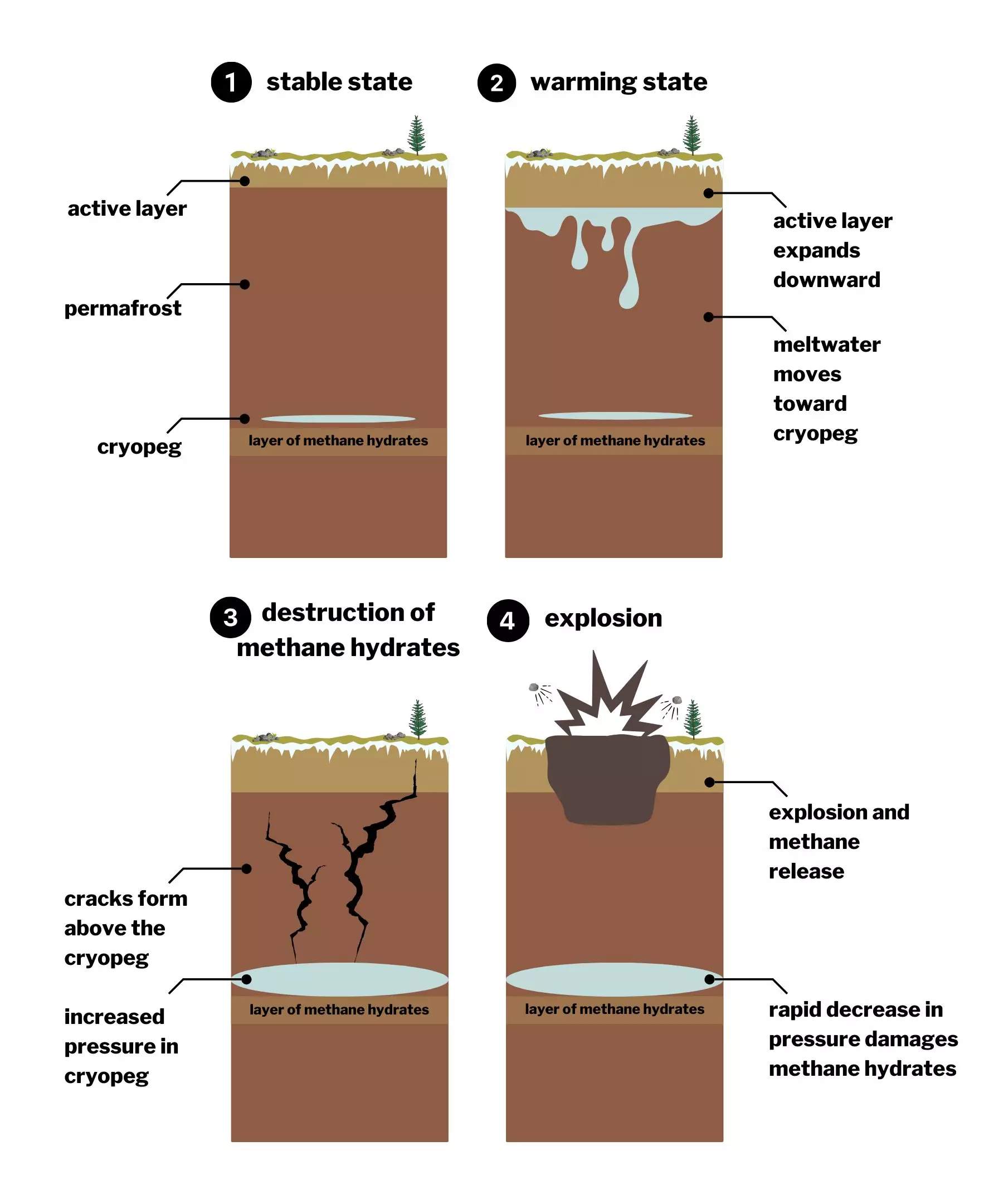In recent years, the discovery of staggering craters in the Siberian permafrost has captivated scientists and the public alike. Initially identified on the Yamal Peninsula in 2014, these enigmatic formations have sparked numerous theories concerning their origins. A recent study published in *Geophysical Research Letters* provides critical insight, emphasizing the role of climate change in conjunction with unique geological characteristics. It posits that dramatic changes in underground pressure, exacerbated by melting permafrost, lead to explosive releases of methane gas, presenting a fascinating intersection of geology and climate science.
At the heart of the mystery lies the science behind the phenomenon: how the interplay between warming temperatures and the region’s geological makeup can produce such explosive consequences. The recent findings suggest that mere permafrost thaw alone cannot explain the explosive nature of the craters. It is not just the warming surface temperatures that matter; the cascading effects deep underground are responsible for the pressure changes critical to the formation of these craters.
Ana Morgado, a chemical engineer at the University of Cambridge and one of the study’s authors, notes the rarity of the circumstances required for such phenomena to occur. “There are very, very specific conditions that allow for this phenomenon to happen,” she asserts, drawing attention to the narrow band of geological factors at play. Only under a unique combination of factors can the release of explosive methane gas occur, transforming the silent landscape into a site of sudden and violent change.
The mechanisms involved can be likened to a bicycle tire being inflated until it bursts. The study suggests that the ‘pump’ responsible for the buildup of pressure in the Yamal craters is, intriguingly, osmotic pressure. This hydraulic process—whereby fluids move to balance out concentrations within a confined space—is central to understanding the explosive nature of these craters.
Within the Yamal Peninsula’s permafrost layer lies a distinctive band of cryopegs—unfrozen, high-salinity water that is exclusively controlled by pressure and salinity levels. As climate change encroaches and the ‘active layer’ of permafrost thaws, it exerts pressure on the existing cryopegs. As the study details, the influx of meltwater exceeds the cryopeg’s capacity to contain it, leading to an inevitable buildup of pressure.
The implications of the study are profound. We are witnessing an evolving landscape that reflects not only the physical changes brought about by warmer temperatures but also the potential risks associated with methane release. Methane hydrates, stability critical to these gas formations, are threatened by environmental changes unfolding at an unprecedented rate. Each explosion is not merely a local event; it is a harbinger of larger, systemic shifts that could have far-reaching implications for climate dynamics.
From the perspective of environmental science, the Yamal Peninsula serves as a cautionary tale. It is a microcosm of the challenges we face globally as climate change progresses, revealing how specific geological settings can compound the effects of global warming. The cascading consequences of these craters’ formation can influence not only regional ecosystems but also contribute to the feedback loops of climate change through increased greenhouse gas emissions.
As the Yamal Peninsula continues to reveal its secrets, scientists stress the importance of deeper understanding and monitoring of these geological phenomena. They warn of the critical need for further study that combines geophysical and climatological research to fully grasp how these changes will impact the Arctic environment and the planet as a whole. With each crater emerging from the permafrost, there lies a powerful reminder of the realities of our warming world—a world where the dynamics of climate and geology intersect in often unpredictable and potentially dangerous ways. The explosion of a crater serves as a wake-up call, urging us to comprehend the deeper implications of climate change and the urgent need for effective responses to mitigate its effects.


Leave a Reply